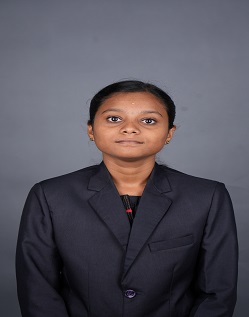Research Journal (PRAPTI)
Prapti - Discovery (Research Journal)
Prapti Research Journal accepts research works from scholars, academicians, professors, doctorates, and corporate in their respective expertise of studies. It is a bi-annual academic research journal for all the streams. The Prapti is to create a forum for review, reflection and discussion informed by the results of recent and ongoing research from all the fields.
| Publisher Name | Dr.Ashok Bakthavathsalam |
| Publisher Address | KG College of Arts and Science,
KGiSL Campus, Saravanampatti,
Coimbatore - 641035,
Tamilnadu. |
Editorial Board
| 1. Dr.S.Vidhya | IQAC - Director,
IQAC.,
KG College of Arts & Science,
Saravanampatti,
Coimbatore - 641035..
Mail-id: vidhya.s@kgcas.com |
| 2. Dr.G.Jagadeeswari | KG College of Arts and Science,
KGiSL Campus, Saravanampatti,
Coimbatore - 641035, Tamilnadu. |
| 3. Dr.S.Kavitha | Assistant Professor,
Department of Tamil.,
KG College of Arts and Science,
Saravanampatti,
Coimbatore - 641 035.
Mail-id: kavitha@kgcas.com |
Guidelines to Authors
These articles should clearly describe new and carefully confirmed results and experimental procedures which should be given in required details for others to verify the work. Manuscripts must be in English and should be written in a clear, concise, and direct style. They should be typed as a Microsoft Word document in double space on the A-4 size page set up. All pages should be numbered consecutively beginning with the title page.
Manuscripts are to be submitted to prapti@kgcas.com
Abstract: The abstract should provide an accurate summary of the study. The abstract should not contain abbreviations, tables, or references.
Keywords: Provide between four and ten key words in alphabetical order, which accurately identify the paper's subject, purpose, method and focus.
Introduction: This should summarize the rationale and provide a background for the study. In introducing the research concern, the writer should provide a clear rationale for why the problem deserves new research, placing the study in the context of current knowledge and prior theoretical and empirical work on the topic.
Literature Review: A literature review surveys books, scholarly articles, and any other sources relevant to a particular issue, area of research, or theory, and by so doing, provides a description, summary, and critical evaluation of these works in relation to the research problem being investigated.
Materials and Methods: This section must describe the methods used in the research in sufficient detail so that other researchers would be able to fully reproduce the study. If established methods are used, authors should give reference and present the method only briefly. Statistical methods should be described in adequate detail.
Results and Discussions: Results should be presented in a logical sequence in the text, tables, and illustrations. It should emphasize the new and important findings of the research and relate the present findings to those of other relevant studies conducted in the field. In addition, the discussion should provide implications of the findings and describe the strengths and limitations of the study.
Conclusion: Conclusion must be based on the data presented in the study, and it should be closely linked to the objectives of the study. Unqualified statements and conclusions not adequately supported by data must be avoided.
References: References must be listed at the end of the paper and numbered consecutively in the order in which they are first mentioned in the text. All references must be cited in text by numeric in superscript.
Paper Submission Format
| PARTICULARS | UNIT IN INCHES |
|---|
| Page Layout |
|---|
| Paper Size | A4 |
| Wide | 8.27 |
| Long | 11.29 |
| Line Spacing | 2 |
| Maximum no. of pages | 8 |
| Margins |
|---|
| Left | 0.75 |
| Right | 0.52 |
| Top | 0.75 |
| Bottom | 0.75 |
| Two columns |
|---|
| Column width | 3.4 |
| Column separation | 0.2 |
| Font settings |
|---|
| Font style | Times new roman |
| Title | 24 |
| Author list | 11 |
| Abstract & keywords | 9 bold |
| Section titles | 10 upper case |
| Normal text | 10 |
| Table/Figure caption | 10 |
| Sub-scripts | 8 |
| Footnotes | 8 |
| References | 8 |
Current Issues






























